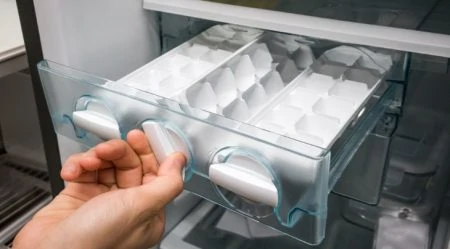If you are pregnant, or suspect you might be, you have probably noticed your chest acting a little strange lately. Are your breasts sore? swollen? tingling?
Breast changes are often one of the very first signs of pregnancy, sometimes kicking in before you even get a positive test result. While you might be used to thinking of your breasts simply as part of your anatomy, they are currently gearing up for a major job: feeding your baby.
From size fluctuations to new colors and sensations, here is the lowdown on what is happening, why it feels that way, and what changes you can expect during the next nine months.
Key Takeaways
- Hormonal surges (estrogen and progesterone) are responsible for tenderness, growth, and preparing your milk ducts.
- You might go up one or two cup sizes, and this growth can stretch ligaments, potentially leading to sagging later.
- Darkening areolas and prominent blue veins are common, likely helping your newborn locate the nipple.
- Leaking colostrum (early milk) is normal in the second or third trimester, though not everyone experiences it.
Why Do Breasts Change During Pregnancy?
When we picture pregnancy changes, we usually think of a baby bump. But your chest is undergoing a transformation that is just as radical. Your body is essentially building a milk factory from the ground up.
Here is exactly why your breasts are shifting:
- Hormonal shifts: Estrogen and progesterone are the main drivers here. Estrogen stimulates the growth of milk duct cells and boosts prolactin (the breastfeeding hormone). Progesterone helps form the milk-producing glands. This hormonal cocktail also causes water retention and fat storage, making your breasts feel heavier.
- Weight gain: Breasts are largely composed of fat tissue. As you naturally gain weight to support your baby, typically 25 to 35 pounds is recommended, some of that settles in your chest. It is completely normal and necessary for energy storage.
- Expanding rib cage: Your baby needs room to grow, so your rib cage actually expands to accommodate your shifting organs and the uterus. While this does not technically grow the breast tissue itself, it widens your band size and changes how your bras fit.
- Increased blood flow: Your blood volume increases by about 50% during pregnancy. A lot of that blood is directed to your breasts to support rapid tissue growth, which can make them feel swollen, warm, or throbby.
- Milk preparation: Even if your baby is months away, your body starts prepping early. The development of alveoli (milk-producing sacs) takes up space, adding to the fullness and density of your breasts.
A Quick Look at Breast Anatomy
To understand the soreness and swelling, it helps to know what is happening under the skin. Your breasts are not just sitting there; they are complex organs extending from your collarbone down to your lower ribs and into your armpit (1).
Inside, you have lobes made up of lobules (the glands that make milk). These connect to ducts that carry the milk to the nipple. Surrounding all of this is fatty tissue and Cooper’s ligaments, which give your breasts their shape and lift.
On the outside, you have the areola, the darker skin circle around the nipple. You might notice small bumps popping up here. These are Montgomery’s tubercles. Think of them as built-in skincare; they secrete oil to keep your nipples lubricated and protected from infection (2).
The Takeaway
6 Breast Changes to Expect During Pregnancy
Every woman is different, but most moms-to-be will tick a few of these boxes during their pregnancy journey:
1. Increased Size
It is not uncommon to go up a full cup size or two. Your breasts can increase in weight by up to two pounds each (3). This rapid growth can sometimes cause the skin to feel tight or itchy as it stretches.
2. Changes in Firmness and Sagging
You have probably heard that breastfeeding causes sagging. That is actually a myth. The real culprit is pregnancy itself. As your breasts grow heavier, they stretch the Cooper’s ligaments holding them up. Once the volume decreases after pregnancy or weaning, those ligaments may not snap back tight, leading to a softer or “saggier” shape.
- The Reality: Pregnancy stretches skin and ligaments, which can alter breast shape long-term.
- The Bright Side: Breastfeeding itself does not make sagging worse, so you can nurse confidently. Wearing a supportive bra during pregnancy can help minimize ligament strain.
3. Visible Veins
You might notice a “road map” of blue veins appearing under your skin. This can look startling, but it is a good sign. It means your blood supply has increased to deliver nutrients to your breast tissue. If you have fair skin, these veins will be more obvious, but they usually fade after you stop breastfeeding.
4. Darker Nipples and Areolas
One of the most distinct changes is the darkening of your areolas. They may also grow larger. Many experts believe this evolutionary biological change serves as a “bullseye” to help newborns, who have poor eyesight, find the nipple for feeding.
The color usually fades post-pregnancy, though it may stay slightly darker than it was before you conceived.
5. Leaking Discharge (Colostrum)
Leaking fluid might freak you out, but it is normal. This thick, yellow substance is colostrum, or “liquid gold.” It is the nutrient-dense pre-milk your baby drinks in the first few days of life.
Leaking can start as early as the second trimester, though it is more common in the third. If it happens, just pop some nursing pads in your bra to protect your clothes. If you never leak a drop during pregnancy, do not worry; it has zero indication of your future milk supply (4).
6. Sensitivity and Tenderness
For many women, breast pain is the very first pregnancy symptom. Hormones can make your breasts feel heavy, sore, or extremely sensitive to touch.
You might find that your usual bra feels like a torture device, or that the water pressure in the shower hurts your nipples. This sensitivity often peaks in the first trimester and settles down later on.
If your nipples are dry or itchy, a pregnancy-safe nipple cream can be a lifesaver.
Are Breast Changes a Symptom of Early Pregnancy?
Yes, breast tenderness is a classic early pregnancy symptom. However, it is a tricky one because it mimics PMS almost perfectly.
Hormones like progesterone spike before your period and during early pregnancy, causing similar water retention and soreness.
- PMS Breasts: Usually feel heavy or swollen right before your period and improve once bleeding starts.
- Pregnancy Breasts: Tend to feel sensitive, tingly, or “fuller” and the feeling persists or intensifies over time.
A Reliable Clue
If you notice darkening, prominent veins, or new bumps on the areola alongside missed menstruation, it is time to take a test.
Dealing With Lumps and Bumps
It is important to mention that you might feel lumps in your breasts during pregnancy. While terrifying, most pregnancy-related lumps are benign. They are often caused by:
- Galactoceles: Milk-filled cysts that occur when a duct gets clogged.
- Fibroadenomas: Solid, benign lumps that can grow due to high hormone levels.
However, because breast cancer can occur during pregnancy, you should always have your doctor check any new lump, dimpling, or redness immediately.
How Much Will My Cup Size Change?
This is the million-dollar question with no solid answer. Some women barely change at all, while others jump up three cup sizes and stay there.
Because your size can fluctuate throughout the trimesters and again when milk comes in postpartum, we recommend:
- Buying flexibly: Look for wire-free, stretchy nursing bras or bralettes that can handle size fluctuations.
- Using extenders: If the cup fits but the band is tight due to your expanding rib cage, a simple bra extender is cheaper than a new wardrobe.
- Waiting to stock up: Don’t buy an expensive breastfeeding wardrobe in your first trimester. Wait until roughly 8 months pregnant for a better idea of your nursing size.
FAQs
The Bottom Line
Your body is doing incredible work right now. While growing a human, it is simultaneously building the nutritional supply system that will sustain them.
From the first week of pregnancy through postpartum, keep an eye out for these shifts:
- Increased cup size and fullness.
- Darker areolas and prominent veins.
- “Bumps” on the areola (Montgomery’s tubercles).
- Tenderness or tingling sensations.
- Occasional leakage of colostrum.
Most of these changes are temporary or will fade significantly after you finish breastfeeding. If anything feels painful, looks infected, or causes you worry, never hesitate to bring it up with your OB-GYN.












